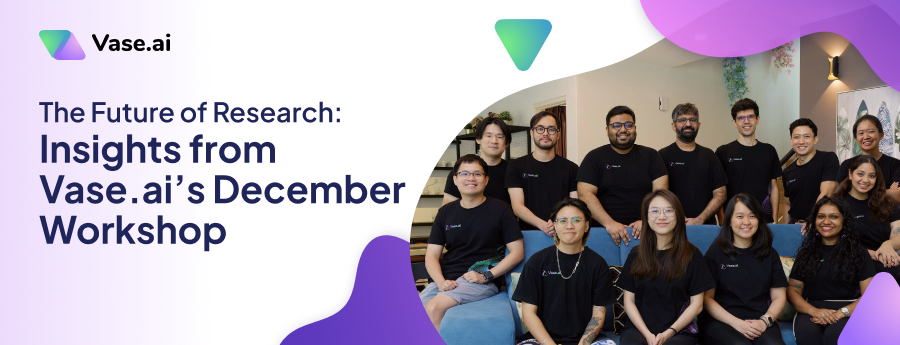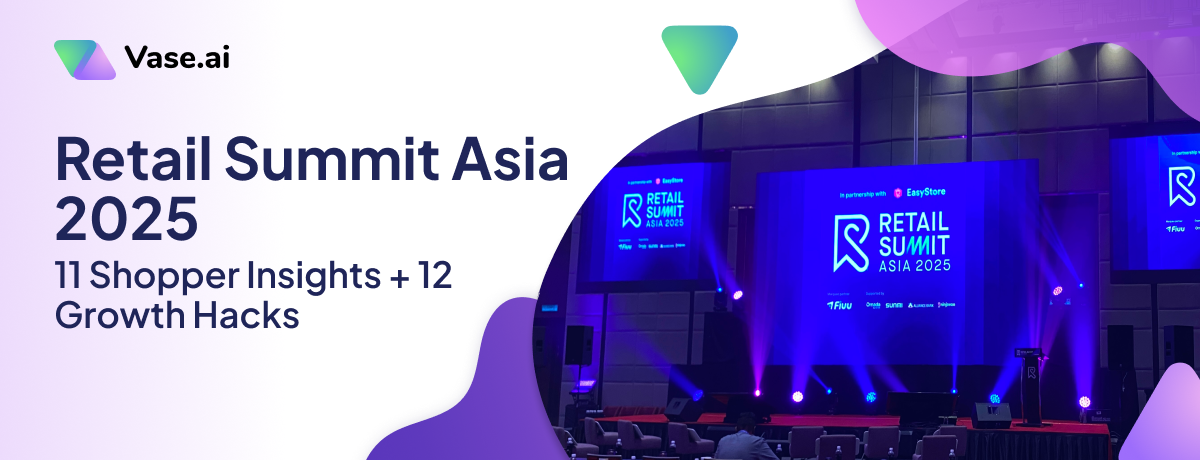When developing and launching a marketing campaign, marketers want to be certain that the campaign can attract more customers and promise good returns on all of their investments. However, it is usually a hefty price to pay for that peace of mind because solutions such as traditional market research are known to be expensive and painstakingly slow, and at times making insights gained from these are no longer relevant for making crucial decisions.
So, marketers tend to turn to marketing intuition or gut feeling; a hit-or-miss approach that downplays customer experience which in turn can unironically lead to costly blunders — remember how Pepsi faced an onslaught of criticisms for its ‘Live for Now – Moments’ ad featuring Kendall Jenner after being accused of trivialising political and social issues such as the ‘Black Lives Matter’ movement? Pepsi eventually apologised and removed the ad from air and its YouTube channel within 24 hours. But the damage allegedly cost Pepsi 2 to 5 million dollars, and worse, a lifetime of embarrassment being cited as a top example of how to do marketing wrong.
Pepsi has pulled its controversial Kendall Jenner ad https://t.co/GvSPqVpURS pic.twitter.com/JzwhXRKEqf
— CNN (@CNN) April 5, 2017
One may wonder if there was a much faster, more cost-effective and no-frills approach that could help marketers meet campaign timelines, be more consumer-centric and explore bolder ideas while prioritising target audiences’ needs?
Enters agile market research.
What exactly is agile market research?
This buzzword has infiltrated the research industry with much of the discussion revolving around its importance and benefits, ensuing an unanswered question: what is it exactly, and how is it different from traditional research?
In simple words, agile market research allows you to act upon an insight quickly and iteratively with confidence whereas traditional market research gives you a more overall comprehensive view at the expense of time and resources. Both approaches have their own merits, but the former lets you quickly make decisions to boost the performance of a campaign in real time and empowers your business to scale with the ever-changing consumer behaviour and demand.
Agile Market Research |
Traditional Market Research |
FlexibleLess time is spent on upfront planning, instead of teamwork, collaboration, timeboxing, and the ability to quickly adapt to changes are preferred. Quick, ongoingResearch efforts can happen in parts, enabling the ability to act on signals of change continuously. Cost-effectivePay specifically for what you need; even if it means finding the answer to one question. |
RigidPlanning is lengthy and rigid to ensure that execution follows 100% what has been laid out at least 3 months in advance, losing out on in-the-moment opportunities. Slow, one-offResearch processes are interdependent and happen in a linear fashion. ExpensiveCostly and comprehensive. Does not support ad-hoc needs. |
Can it help develop a winning campaign?
Agility is not a new concept; many businesses have accelerated its adoption in one way and another. Facebook, or Meta, didn’t start with a winning product from the get-go. Instead, it continuously introduces (yes, even until today) improvements to its software based on feedback from its 2.9 billion active users. From being a purely social networking platform to acquiring various social media platforms and ultimately selling advertising space, Meta is definitely the poster child of agility.
Here we can see that to make agility work, one needs to be equipped with the ability to rapidly iterate, experiment and execute campaign decisions with certainty. There can’t simply be agility without iteration.
Traditional marketing usually involves sticking hard and fast to campaign plans charted out in advance, leaving little to no room to adjust parts of a campaign or even letting previous plans altogether to seize opportunities at the moment. Agile, or rather iterative research (given how one can’t exist without the other, I will use agile research and iterative research interchangeably here onwards) enables marketers to implement changes, adapt and improve at every stage of a campaign.
1. Campaign planning
-
Craft the right messaging
Messaging can really make or break a campaign, and having a high budget doesn’t guarantee success either. Iterative research gives you the opportunity to improve this central campaign aspect by validating it with target personas to a point where you are confident that not only the messaging is distinctive and meaningful, but also believable and impactful.
-
Identify the best creative direction
For most designers, it can be a frustrating argument with marketers when it comes to artistic creations. Iterative testing empowers both the designer and marketer to make changes that are backed by consumer feedback and removes the argument of subjectivity. The result? An accelerated testing process that gives designers more room for creative exploration and marketers to focus on the strategic execution of the campaign.
-
Identify the best advertising and promotional channels
The problem with analytics is that they are always changing — almost in tandem with consumer behaviour. And relying on what has worked in the past is not enough to optimise conversion rates of every unique campaign and it certainly won’t bring you closer to ideal customers. Even if your campaign strategies consist of multiple touchpoints, iteration encourages you to monitor each performance so that you can more fluidly and effectively maximise your ad investments.
-
Deliver the perfect pitch
Agencies understand this pain too well: coming up with a compelling, data-driven pitch in a short amount of time with a tight budget and having solid confidence in winning a deal. The solution is to iterate affordably, quickly and transparently among all campaign stakeholders — imagine asking even just one question to target personas and receiving responses within hours, all monitored through a real-time dashboard.
2. Campaign execution
-
Reconfigure assets to amplify campaign performance
Only agile marketers are able to employ moment marketing tactics. Take advantage of ongoing events to bring a campaign’s relevance among audiences. It’s not easy to pull off great moment marketing because marketers must ensure that it’s timely and sticky. So time and feedback are of utmost importance here.
3. Campaign evaluation
-
Measure the campaign effectiveness
The goal of iteration is not to find an all-encompassing campaign strategy, but to continuously identify and test winning concepts or ideas based on results so that every decision is an optimised one. More importantly, proving to clients or stakeholders that your team has done a great job.
How to apply agile market research at scale?
At this point, you may be convinced to adopt agile research, but are unsure how to do that. Cut across the complexity of frameworks and apply this easy, 3-step consumer insight loop.
Adopted by top Silicon Valley companies such as Facebook, LinkedIn, and Uber, the loop operates on consumer insights to activate iteration for effective decision-making and action-taking, covering three critical points:
- See consumer insights as a feedback mechanism in every single thing
- Direct the specific feedback and tie it to a new action
- Measure the outcome of the new action. And repeat.

Let’s apply this loop to several case studies.
1. Carsome
Problem
Before turning into a unicorn, this Malaysian company with a platform that specialises in buying and selling used cars saw low adoption rates of its platform among Malaysians. So the brand sought to find out why.
Insight AKA Feedback
After launching consumer surveys and analysing the data, it turned out that the public did not positively perceive used car dealerships. The challenge then was to establish integrity, credibility, and authenticity.
Action
The next action that Carsome took upon receiving this feedback was to change its marketing messaging and creative directions in all of its campaign plans to address the credibility concern. To measure if any of those actions lead to any changes, the team tracked the campaign effectiveness among the target audience of Carsome continuously every time they make changes.
Outcome
Over 4 phases of iteration, the team saw a brand lift from 19% to 27% in brand awareness. And as they specifically address the trust issue across used car dealerships, consumers who see Carsome as a different company improve from 18% to 30%, marking a positive lift of brand perception. On top of that, Carsome learnt that one of the most effective ways is to put actual customers in the ads can help improve credibility and trust.
2. Three
Problem
As a telco company that operates in multiple countries, Three wanted to increase the roaming usage data among users. To run a successful promotional campaign, Three gathered information about its audience’s habits, specifically what they typically share on social media when they go on overseas trips.
Insight AKA Feedback
It learnt that people love to show off their experiences online but were stopped by expensive roaming charges.
Action
With this consumer insight, Three decided to set a lower roaming service price.
Outcome
Eventually, it found that the audience used 71 times the amount of data they would have used if that service was charged at the usual roaming tariffs. And most of that “extra service” was used to share holiday photos and selfies on social media.
3. Malaysia Airlines
Problem
During nationwide lockdowns, the aviation industry was one of the hardest hit and many refocused marketing budgets for business continuity. But Malaysia Airlines had a better idea to ramp up brand awareness and relevance during these tough times.
Insight AKA Feedback
First, the team learnt that many Malaysians missed the overall experience of travelling via planes, including waiting to onboard a flight.
Action
Using this feedback, the team hosted an online social media challenge in which it encouraged participants to record their rendition of the cabin crew landing announcement. The team then compiled these renditions and turned them into a YouTube video.
Outcome
This zero-budget content strategy saw an increase of over 100,000 subscribers to the company’s YouTube channel, PR coverage from 33 news outlets and so much more.
The Sounds of MH - ASMR & Chill (KUL-LHR)
A change in mindset and action
Quick consumer feedback is a core aspect of agile market research. It has been successfully used in small and big businesses to great effect, it will work for any organisation too.
But the real value of agile market research or iterative research lies not in tools and solutions, but in how it shapes a growth mindset in the long run that in turn, will contribute to:
- Stronger, smarter and faster decision-making
- Accelerated and transparent collaboration and communication between stakeholders
- A stronger brand that attracts new customers and converts existing ones into advocates
Vase.ai can help accelerate the adoption and application of agile research within days with easy-to-follow guides and frameworks, AI-backed insights and support from research experts. Transform your campaign planning with a consumer research platform that operates by agility. Start your agile research journey today: https://www.vase.ai/contact





